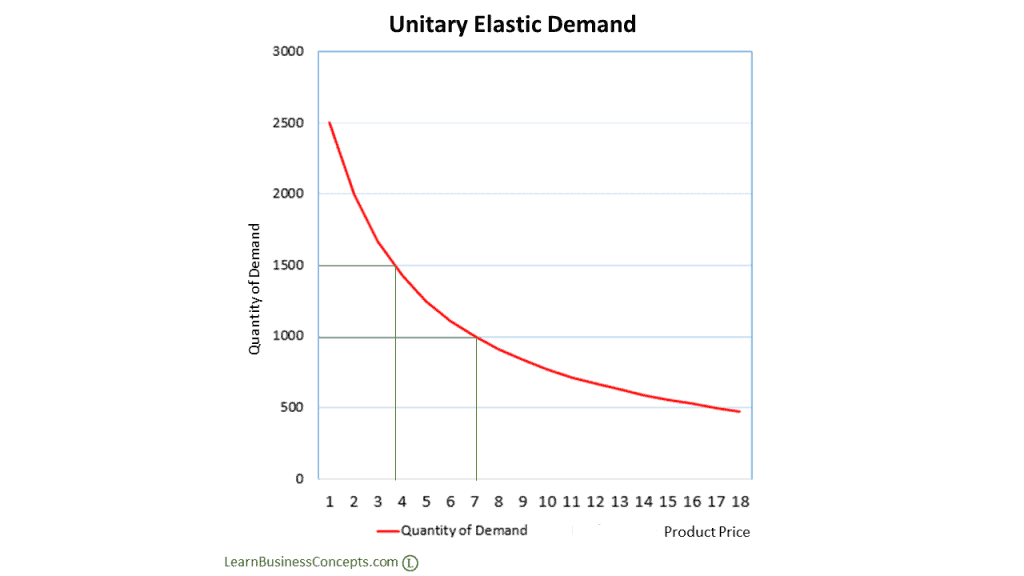Unitary (Unit) Elastic Demand: Definition, Examples, Curve
Unitary elastic demand (also known as unit elastic demand) is where the demand changes in a similar proportion to the price. Demand for a good is unitary elastic when the percentage change in quantity demanded is equal to the percentage change in price.
Definition of Unitary Elastic Demand
Unitary elastic demand is a type of elasticity of demand where the product demand changes in a similar proportion to the price. This is where a price reduction equally raises the demand, and a price increase equally falls demand.

Detailed Explanation of Unitary Elastic Demand
Unitary elastic demand does not help to generate more revenue based on the change in the product price. Revenue will hold at the same level where the quantity sold and price will be balanced to generate the same revenue level.
You may see in the below chart where the demand (quantity sold) changes in a similar proportion to the product price. Revenue is stable in the same level.
| Product Price (B) | Product Demand (A) | Revenue (A * B) |
|---|---|---|
| $200 | 50 | 200 * 50 = $10,000 |
| $100 | 100 | 100 * 100 = $10,000 |
| $50 | 200 | 50 * 200 = $10,000 |
| $25 | 400 | 25 * 400 = $10,000 |
Unitary elastic demand displays an equal variation in the demand, in response to the change in price. This means a fifty percent price rise leads to a fifty percent decline in quantity demanded.
As per the above chart, product price is changed from $200 to $100 (50% decrease). Then the demand climbed from 50 to 100 (50% increase).
Examples of Unitary Elastic Demand
A typical example of unitary elastic demand is electronic products. As an example mobile phones, essential electronic products, home appliances.
The Elasticity Coefficient of Unitary Elastic Demand
The elasticity coefficient of unitary elastic demand is equal to one.
The price elasticity coefficient is calculated by dividing the change in the quantity demand by the change in the price.
Price elasticity demand (ep) = % change in quantity demand / % change in price
In an unitary elastic demand product, change in quantity demand is equal to the price change. Hence the price elasticity coefficient will always be 1.
Recommended Articles:
- Price Elasticity of Demand Explanation
- Types of Price Elasticity of Demand – Full Explanation
- Inelastic Demand: Definition, Examples, Diagram
- Perfectly Elastic Demand: Explanation with Examples
- Difference Between Elastic Demand and Inelastic Demand
- Difference Between Unitary Elastic and Inelastic Demand
- Explanation and Calculation of Elasticity Coefficient


